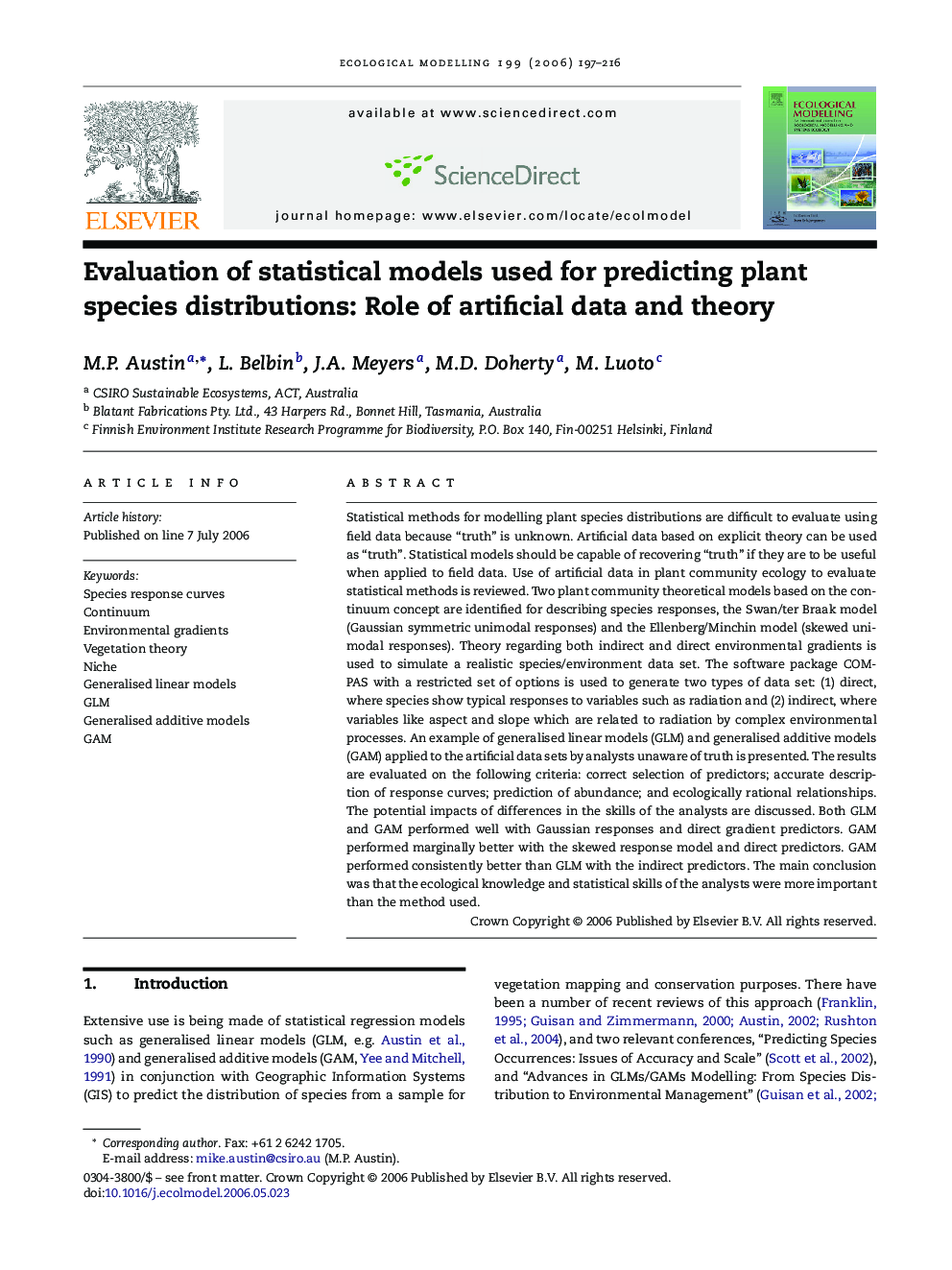| کد مقاله | کد نشریه | سال انتشار | مقاله انگلیسی | نسخه تمام متن |
|---|---|---|---|---|
| 4378993 | 1303503 | 2006 | 20 صفحه PDF | دانلود رایگان |

Statistical methods for modelling plant species distributions are difficult to evaluate using field data because “truth” is unknown. Artificial data based on explicit theory can be used as “truth”. Statistical models should be capable of recovering “truth” if they are to be useful when applied to field data. Use of artificial data in plant community ecology to evaluate statistical methods is reviewed. Two plant community theoretical models based on the continuum concept are identified for describing species responses, the Swan/ter Braak model (Gaussian symmetric unimodal responses) and the Ellenberg/Minchin model (skewed unimodal responses). Theory regarding both indirect and direct environmental gradients is used to simulate a realistic species/environment data set. The software package COMPAS with a restricted set of options is used to generate two types of data set: (1) direct, where species show typical responses to variables such as radiation and (2) indirect, where variables like aspect and slope which are related to radiation by complex environmental processes. An example of generalised linear models (GLM) and generalised additive models (GAM) applied to the artificial data sets by analysts unaware of truth is presented. The results are evaluated on the following criteria: correct selection of predictors; accurate description of response curves; prediction of abundance; and ecologically rational relationships. The potential impacts of differences in the skills of the analysts are discussed. Both GLM and GAM performed well with Gaussian responses and direct gradient predictors. GAM performed marginally better with the skewed response model and direct predictors. GAM performed consistently better than GLM with the indirect predictors. The main conclusion was that the ecological knowledge and statistical skills of the analysts were more important than the method used.
Journal: Ecological Modelling - Volume 199, Issue 2, 16 November 2006, Pages 197–216